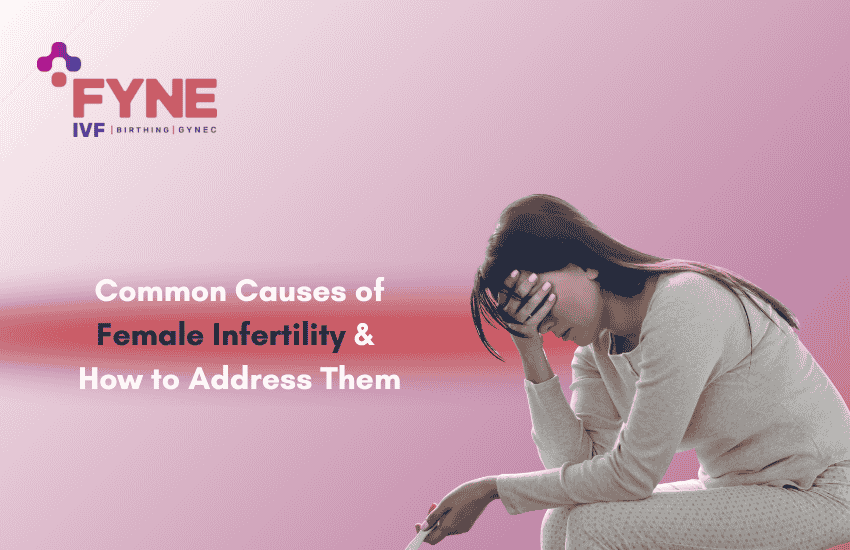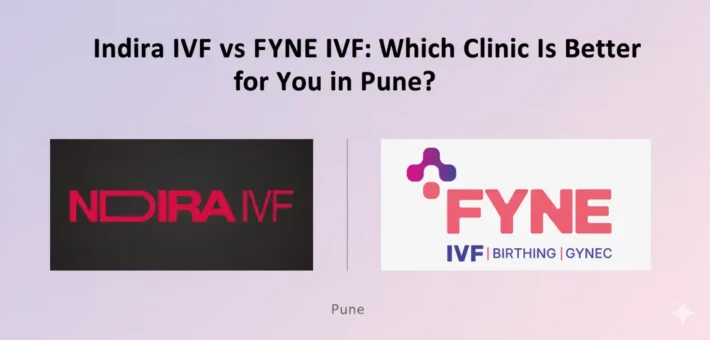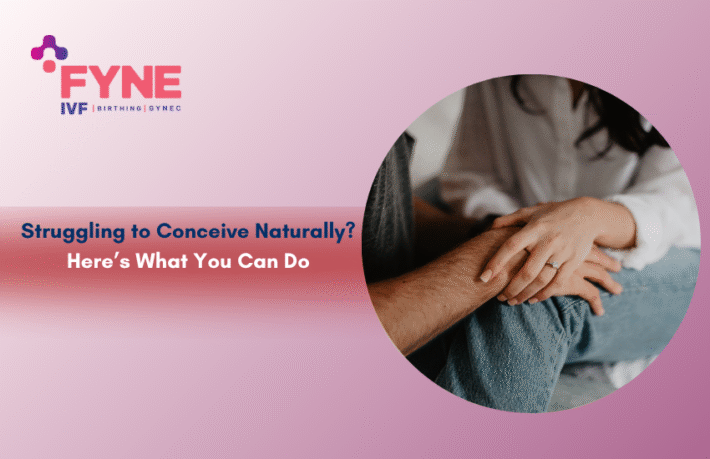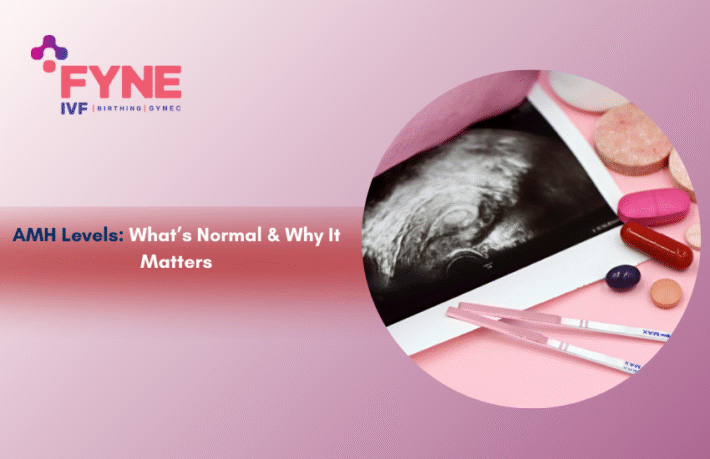Common Causes of Female Infertility & How to Address Them

Infertility affects many women, and the emotional toll it takes can be overwhelming. It is generally defined as the inability to conceive after one year of trying without success. Infertility is not just a “woman’s issue” – it can be a shared challenge for both partners. However, the good news is that many causes of female infertility are treatable. With early diagnosis and personalised treatment plans, the path to parenthood can still be achievable.
Read on and learn about the most common causes of female infertility, including ovulation disorders, fallopian tube damage, and age-related decline in fertility. We will also discuss the treatments available to help address these issues and enhance your chances of conception.
Ovulation Disorders
Ovulation disorders are one of the most common causes of female infertility. These disorders can prevent the release of a healthy egg, making conception difficult. Common conditions include:
- Polycystic Ovary Syndrome (PCOS): A hormonal imbalance that disrupts ovulation.
- Thyroid Dysfunction: An underactive or overactive thyroid can affect your menstrual cycle and ovulation.
- Irregular Cycles: Women with irregular cycles may struggle with ovulation, making it harder to predict the optimal time for conception.
Symptoms of ovulation issues can include irregular periods, excess hair growth, weight gain, and acne (in the case of PCOS). A thorough diagnosis can be done through blood tests and ultrasounds to measure hormone levels and assess ovarian function.
How IVF Addresses It:
- Ovulation Induction: Medications are prescribed to stimulate ovulation.
- Timed Intercourse: For women with predictable ovulation patterns, monitored cycles can maximise chances of conception.
- IVF: In more challenging cases, IVF (In Vitro Fertilisation) can bypass ovulation issues entirely by directly fertilising eggs outside the body.
Fallopian Tube Damage or Blockage
Blocked or damaged fallopian tubes are a significant barrier to conception. Infections, endometriosis, and previous surgeries (such as pelvic or abdominal surgeries) are common causes of damage to the tubes. The fallopian tubes are essential for transporting the egg from the ovary to the uterus, and any damage can prevent fertilisation.
How It’s Diagnosed:
- Hysterosalpingography (HSG): A type of X-ray that checks the openness of the fallopian tubes.
- Laparoscopy: A minimally invasive surgery used to inspect the fallopian tubes and remove any blockages or scar tissue.
Treatment Options:
- Tubal Surgery: In some cases, surgery can correct blockages.
- IVF: IVF bypasses the fallopian tubes altogether, allowing for fertilisation and embryo transfer directly into the uterus.
Endometriosis
Endometriosis is a condition where tissue identical to the lining of the uterus develops outside the uterus. It can cause severe pain and impact fertility. Endometriosis often leads to scarring and adhesions, affecting the reproductive organs, particularly the ovaries and fallopian tubes. Commonly occurring symptoms include pelvic pain, painful periods, and pain during intercourse.
Management:
- Laparoscopy: This is a key procedure to diagnose and treat endometriosis by removing excess tissue.
- Medical Therapy: Hormonal treatments can help manage the symptoms of endometriosis.
- IVF with Embryo Freezing: For women with advanced endometriosis, IVF can provide a better chance of success. Embryo freezing allows for the preservation of healthy embryos, increasing the chances of pregnancy.
Uterine or Cervical Abnormalities
Uterine abnormalities, such as polyps, fibroids, and uterine septa, can interfere with implantation or the development of a healthy embryo. These issues often go undiagnosed until a couple struggles to conceive.
Advanced diagnostic techniques like hysteroscopy and ultrasound can identify these abnormalities. In many cases, treatments like surgical removal of fibroids or polyps can improve fertility outcomes.
Treatment Options:
- Surgical Intervention: To remove any obstructions or abnormalities within the uterus.
- IVF: IVF allows for a more controlled environment for embryo development, bypassing some of the issues caused by uterine conditions.
Age-Related Decline in Fertility
One of the most well-known causes of infertility is the decline in fertility with age. As women approach 35 years and beyond, both egg quality and egg quantity begin to decline, making conception more challenging. Women in this age group may experience diminished ovarian reserve, which can result in fewer eggs available for fertilisation.
How Fertility Preservation Can Help:
- Egg Freezing: For women who are delaying motherhood, egg freezing offers a way to preserve fertility at a younger age.
- Donor Eggs: Women over 35 who struggle with low egg quality may opt for IVF with donor eggs, which has very high success rates.
Lifestyle & Environmental Factors
Lifestyle and environmental factors play a major role in fertility. Smoking, excessive alcohol consumption, poor diet, stress, and toxin exposure can all contribute to infertility. Counselling and wellness support are available for those looking to make positive lifestyle changes. Addressing these factors can greatly improve the chances of conception.
In Conclusion: Moving Forward with Confidence
Infertility can be an emotional and challenging journey, but understanding its causes and knowing your options for treatment is empowering. Whether it’s ovulation issues, endometriosis, or age-related fertility decline, there are treatments available to help you overcome these obstacles and take the next step on your path to parenthood.
If you’re facing infertility and need expert advice, don’t hesitate to seek a fertility consultation. At FYNE IVF, we are here to provide you with the guidance, support, and treatment you need to realise your dream of starting a family. Book a consultation with us, and we will help you understand your fertility health and offer personalised treatment plans to enhance your chances of success.
FAQs
1. What are the most common causes of female infertility?
The most common causes include ovulation disorders (like PCOS or thyroid issues), fallopian tube damage, endometriosis, uterine abnormalities, and age-related fertility decline.
2. How does IVF help in treating female infertility?
IVF (In Vitro Fertilisation) helps by bypassing ovulation issues, blocked tubes, or uterine abnormalities. It allows fertilisation outside the body and direct embryo transfer to the uterus.
3. Can lifestyle changes improve female fertility?
Yes, quitting smoking, reducing alcohol, eating a balanced diet, managing stress, and avoiding toxin exposure can improve reproductive health and fertility outcomes.
4. At what age does female fertility start to decline?
Female fertility typically starts to decline around age 35. Egg quality and quantity decrease with age, making conception more difficult over time.
5. Is egg freezing a good option for women delaying pregnancy?
Yes, egg freezing is an effective way to preserve fertility for women who wish to conceive later. It allows them to use younger, healthier eggs when ready for pregnancy.


